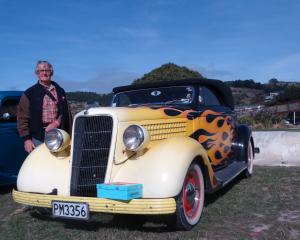Since the 1980s, they have been collecting American Depression glass, now have ''well over'' 100 pieces and decided they wanted to share it with people rather than have it stored in boxes at home.
Mr Comfort has built lit display cases and the four-month exhibition of part of a collection worth more than $20,000 has opened in Tyne St, at the Oamaru Textile Emporium.
Some pieces they have doubled up on are for sale.
Depression glass was produced in the United States by about 20 companies to attract people to businesses or buy products, much the same as some supermarkets these days offer cutlery and dinnerware as incentives to shop.
Generally colourful, pieces would have been in a cereal box or other grocery items for people to collect, or handed out with sales such as petrol. Full sets were also sold.
It was made from the 1920s to the 1940s in moulds from glass used for bottles or food, some continuing after World War 2.
The Comforts discovered the glass in a small second-hand shop when they visited the United States.
Back in New Zealand, they found it had made its way here.
That started trips around New Zealand exploring all sorts of second-hand and knick-knack shops to buy pieces.
One piece they bought from a Turangi second-hand shop filled with fishing rods and other outdoors equipment is one of only two known in the world.
When they first started buying, pieces cost $4 or $5. Now they are seeing pieces selling for $75, with more collectors active.
It is also becoming rare.
''Women who had the pieces originally were probably in their early 20s. By 1990, they were in their 80s and 90s.
"As they died, families threw it out as junk or sold it to second-hand shops.
''Now, there aren't as many pieces left,'' Mr Comfort said.
All their collection is catalogued and the makers and patterns known for all but a small number.
Most manufacturers have disappeared but one or two remain in existence, such as Anchor Hocking.
The Comforts no longer actively add to their collection, but Mr Comfort admitted if he spotted a rare piece at a good price he would probably buy it.











